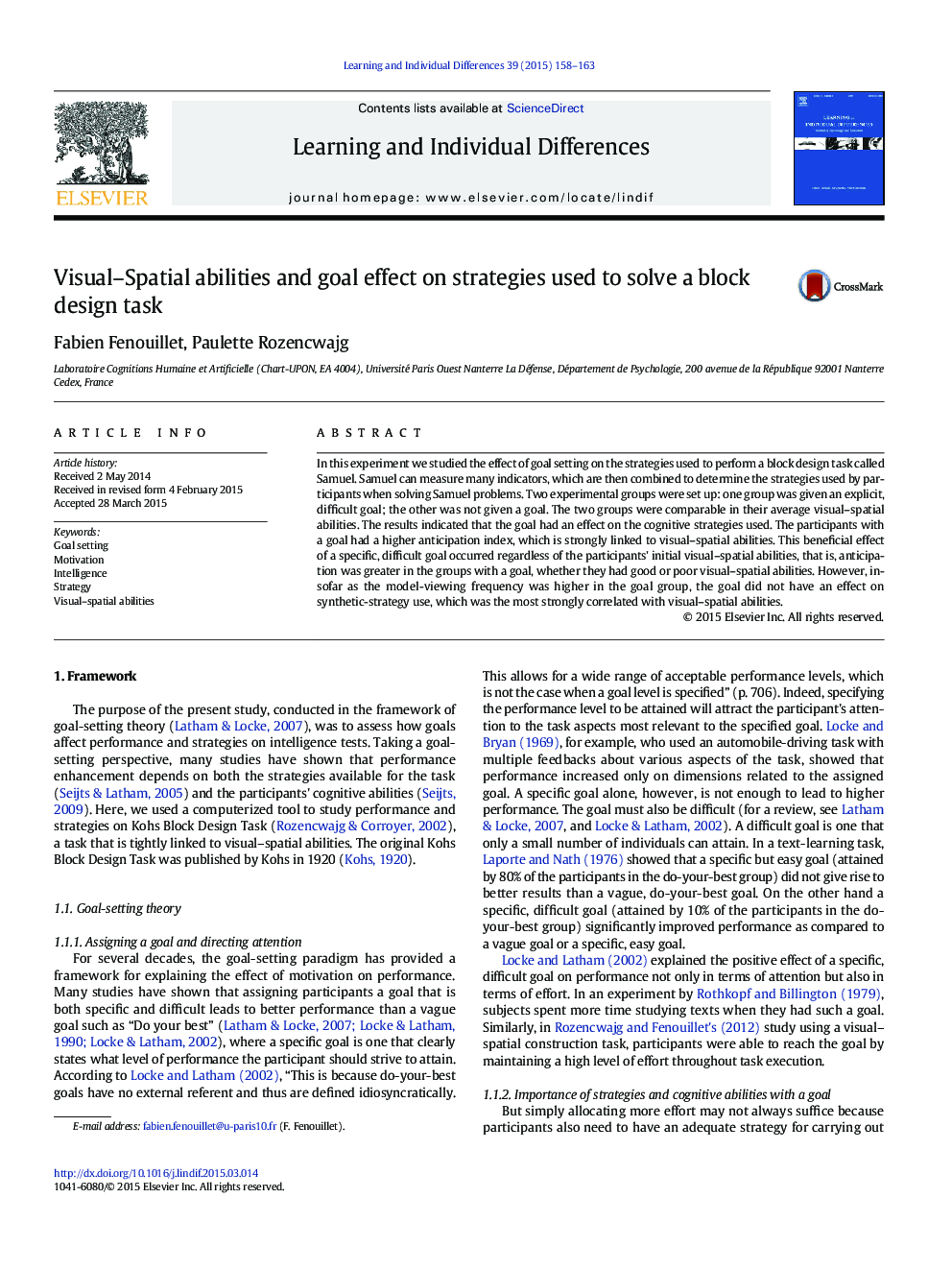| Article ID | Journal | Published Year | Pages | File Type |
|---|---|---|---|---|
| 364552 | Learning and Individual Differences | 2015 | 6 Pages |
Highlight•This research examines the effect of a setting goal on visual–spatial abilities.•The results indicated that the goal had an effect on the cognitive strategies used.•The participants with a goal had a higher anticipation index.•For good or poor visual–spatial abilities, anticipation was greater in the groups with a goal.•These findings demonstrate that setting a goal can have an effect on some aspects of visual–spatial abilities.
In this experiment we studied the effect of goal setting on the strategies used to perform a block design task called Samuel. Samuel can measure many indicators, which are then combined to determine the strategies used by participants when solving Samuel problems. Two experimental groups were set up: one group was given an explicit, difficult goal; the other was not given a goal. The two groups were comparable in their average visual–spatial abilities. The results indicated that the goal had an effect on the cognitive strategies used. The participants with a goal had a higher anticipation index, which is strongly linked to visual–spatial abilities. This beneficial effect of a specific, difficult goal occurred regardless of the participants' initial visual–spatial abilities, that is, anticipation was greater in the groups with a goal, whether they had good or poor visual–spatial abilities. However, insofar as the model-viewing frequency was higher in the goal group, the goal did not have an effect on synthetic-strategy use, which was the most strongly correlated with visual–spatial abilities.
